|
|
Occult
Aboriginal mysticism. Dreams . Reality. Conflict.
In 1977, Australian director Peter Weir made a haunting film dealing with central themes of cultural understanding, tolerance and man's communication with the natural world. As a follow up to the critical success of his 1975 film Picnic at Hanging Rock, The Last Wave was able to generate a similar foreboding presence of the unknown. Both films deal with mans' compelled acceptance of the spiritual forces that modern society has alienated itself from, all presented within a penetrating atmosphere of suspenseful mystery.
|
||
|
The Last Wave directed by Peter Weir Review of the film and Criterion DVD by Gary W. Tooze |
|||
|
A young Sydney lawyer, David Burton ( played by Richard Chamberlain, whom is best remembered as Doctor Kildare from the TV series of the same name ) is requested by Legal Aid to defend a group of Aborigines who are accused of murder. David is shown as an upper middle class yuppie-type achiever with attractive wife and two cute daughters. They reside in the suburbs of Sydney in a nicely appointed home. His new clients are making his work quite difficult as they remain silent regarding the incidents surrounding the murder that they are accused of. As he delves deeper into their culture, he is also fraught with lifelike dreams that are interfacing with the details of his case. |
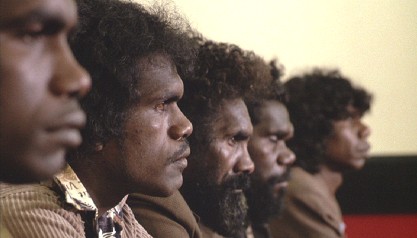 |
||
|
Right from the very first scene, the story intimates a parallel to the unusual weather circumstances that are occurring throughout Sydney at the time of the ongoing trial. Large hail falls violently on one day, blotchy mud from the sky's on another. The subtle background sounds of radio broadcasts detail proposed scientific explanations for the events. The plot thickens. |
|||
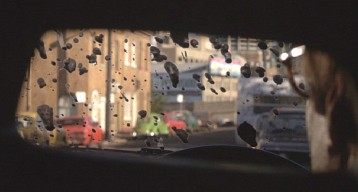 |
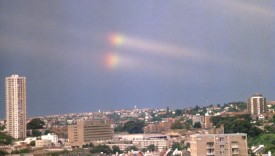 |
||
| Some of the best interaction of characters in the film is between David and the mysterious, accused aboriginal, Chris Lee ( played by David Gulpilil whom many will remember as a youth in Nicolas Roeg's excellent film, Walkabout ). The masked discussions involving tribal law and David's uncanny dreams go further to evoke the mystery and suspense of the film. | |||
 |
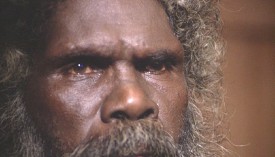 |
||
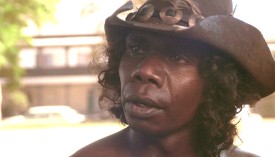 |
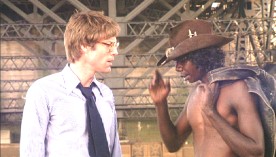 |
||
| The ending, with David being led to a
spiritual underground cave in which he finds a death mask of his own
face and is then confronted by the Aboriginal elder "Charlie"
in the initial guise of an owl, is quite haunting and memorable.
The film's final scene, which an explanation is left in abeyance, can
become the body of serious interpretational conversation. Has all this
mystery surrounded a tsunami that is approaching the Australian
shoreline?... is it the end of the world? or simply another dream of
David's. It doesn't seem to matter for the eventual "feeling"
the of the film that Weir is so adept at transferring to the audience.
This is certainly more an "art" film that a run-in-the-mill
thriller.
I loved it... many will not. |
|||
|
DVD and Film Details |
|||
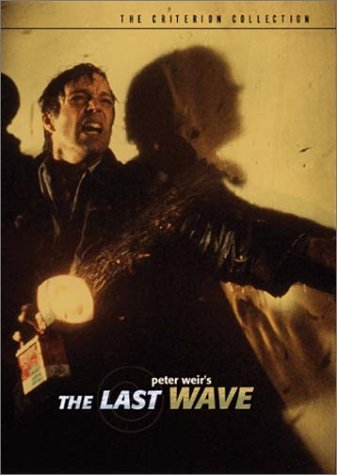 |
Anamorphic 1.77:1 ratio. Dolby Digital
Stereo 2.0.
The picture quality is excellent with many instances in the film where the subtle blue undertones are remarkably visible. Well done again by Criterion. |
|
|
 |
The Extras on the DVD include an informative 2001 interview ( specially made by Criterion ) with director Peter Weir. He recalls anecdotes involving the making of The Last Wave and his unique interaction with some of the aboriginal cast members. The footage is unfortunately quite short. I felt like it was about 10 minutes long ( in reality it is 10:45 ) and would have loved it to be more in depth, detailed and certainly longer. | ||
| Cast overview,
(first billed only)
Director
|
Technical
Information
Release Information: Aspect Ratio(s): Edition Details:
|
||

